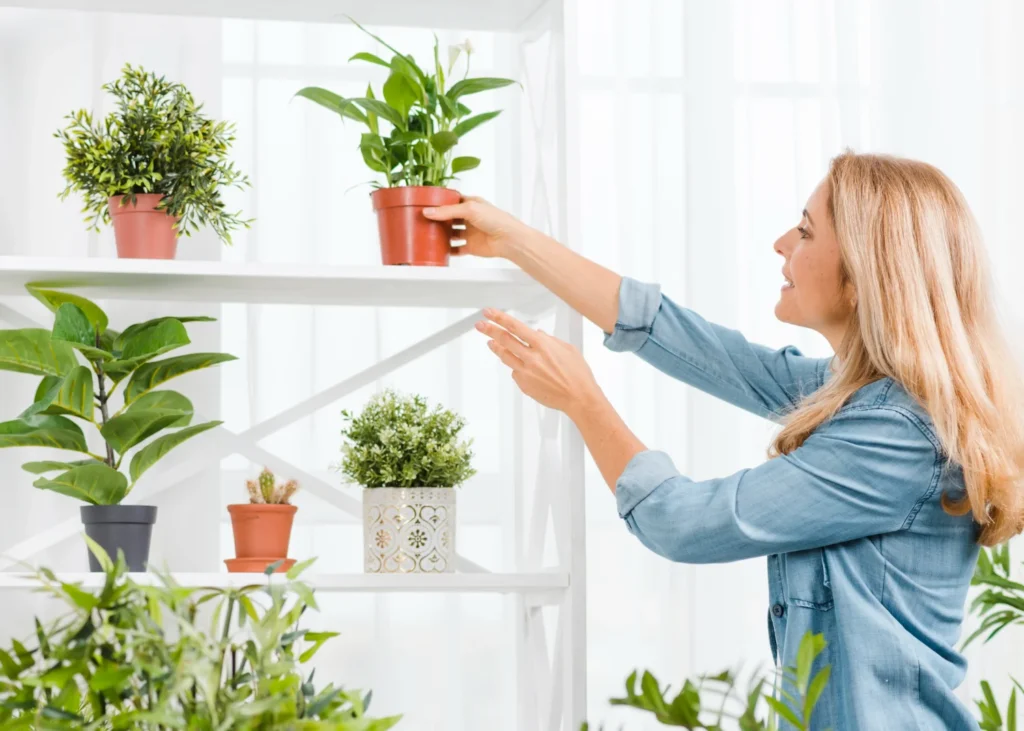Welcome to your go-to guide for enhancing your best indoor houseplants for air quality! In this quick read, we’ll unveil the top indoor plants that not only beautify your space but also purify the air you breathe.
Get ready to discover nature’s air-purifying powerhouses and transform your home into a refreshing sanctuary. Let’s dive in and green up your indoor environment for a healthier, happier you!
Discover The Best Indoor Houseplants For Air Quality
Are you curious about the best indoor houseplants for air quality? Are you wondering which ones are most effective at purifying the air in your home? In this comprehensive guide, we’ll explore a variety of indoor plants known for their air-purifying properties. From hardy foliage to vibrant blooms, these plants not only add beauty to your indoor space but also help remove harmful chemicals and toxins from the air.
How Does Poor Indoor Air Quality Affect Your Health?

Poor indoor air quality can have a significant impact on your health and well-being. Exposure to indoor air pollutants such as volatile organic compounds (VOCs), formaldehyde, and airborne mold can lead to a range of health issues, including respiratory problems, allergies, and even more severe conditions like asthma and lung disease.
Can Houseplants Improve Indoor Air Quality?
Yes, houseplants can help improve indoor air quality by absorbing harmful pollutants and releasing oxygen into the air. Research has shown that certain indoor plants can remove toxins such as benzene, formaldehyde, and trichloroethylene from the air, making them a natural and effective way to purify indoor spaces.
Familiar Sources Of Indoor Air Pollution
Petroleum candles
Petroleum candles can release harmful chemicals such as benzene and toluene into the air when burned, contributing to indoor air pollution and negatively impacting air quality.
Air fresheners
Many commercial air fresheners contain volatile organic compounds (VOCs) and other chemicals that can worsen indoor air quality and trigger respiratory problems in sensitive individuals.
Cooking
Cooking activities, especially those involving high heat or frying, can produce airborne pollutants such as particulate matter, carbon monoxide, and volatile organic compounds (VOCs), which can degrade indoor air quality if not properly ventilated.
5 Tips For Taking Care of Indoor Plants
- Provide Adequate Light: Different plants have different light requirements, so make sure to place them in locations where they can receive the appropriate amount of sunlight or artificial light.
- Water Regularly: Proper watering is essential for the health of indoor plants. Be sure to water them according to their specific needs, taking into account factors such as soil type, humidity levels, and temperature.
- Monitor Humidity Levels: Indoor plants thrive in environments with moderate humidity levels. Consider using a humidifier or placing a tray of water near your plants to help maintain optimal humidity levels.
- Prune and Trim: Regular pruning and trimming help promote healthy growth and prevent overgrowth or crowding. Remove dead or yellowing leaves, as well as any damaged or diseased parts of the plant.
- Fertilize Occasionally: Indoor plants benefit from occasional fertilization to replenish nutrients in the soil. Use a balanced fertilizer explicitly formulated for indoor plants, and follow the instructions carefully to avoid over-fertilizing.
How Do Plants Purify Air?

Low-Light Air Purifying Plants vs Air Purifier Machines
While air purifier machines can effectively remove airborne pollutants, low-light air purifying plants offer a natural and eco-friendly alternative. Plants such as snake plants, spider plants, and peace lilies are known for their ability to purify the air, even in low-light conditions.
Air Purifying Plants for Homes with Pets
When choosing air-purifying plants for homes with pets, it’s essential to consider the safety of the plants. Opt for pet-friendly options such as Boston ferns, bamboo palms, and areca palms, which are non-toxic to cats and dogs.
FAQ More About The Best Indoor Houseplants For Air Quality
Which house plant purifies the air the most?
According to NASA‘s Clean Air Study, some of the most effective air-purifying plants include snake plants, spider plants, peace lilies, pothos, and bamboo palms.
What plant removes 78% of airborne mold?
The spider plant, also known as Chlorophytum comosum, has been found to remove up to 78% of airborne mold from indoor spaces, making it an excellent choice for improving indoor air quality.
Which indoor plant is the best air purifier?
While there are many indoor plants with air-purifying properties, some of the best air purifiers include snake plants, spider plants, peace lilies, pothos, and bamboo palms, as they are highly effective at removing toxins from the air.
What plants are suitable for indoor air quality?
Several indoor plants are known for their air-purifying properties and are good choices for improving indoor air quality. Some examples include snake plants, spider plants, peace lilies, pothos, bamboo palms, and rubber plants.
Do house plants actually improve air quality?
Yes, house plants can improve indoor air quality by absorbing harmful pollutants and releasing oxygen into the air. Research has shown that certain indoor plants can help remove toxins such as benzene, formaldehyde, and trichloroethylene from the air, making them an effective natural air purifier.
What are the best indoor houseplants for air quality?
The best indoor houseplants for air quality include peace lilies, spider plants, snake plants, pothos, and rubber plants, among others.
How do indoor houseplants contribute to clean air indoors?
Indoor houseplants play a crucial role in purifying indoor air by absorbing pollutants like formaldehyde, benzene, and xylene through their leaves and roots.
Are there specific indoor houseplants known for removing indoor pollutants effectively?
Yes, certain indoor houseplants such as Boston ferns, bamboo palms, and aloe vera are known for their ability to effectively remove indoor pollutants and promote cleaner indoor air.
How can I ensure I choose the best indoor houseplants for great air quality in my home?
To choose the best indoor houseplants for great air quality, consider factors like the plant’s air-purifying capabilities, ease of maintenance, and suitability for indoor environments with varying light and humidity levels.
Do indoor houseplants really help in reducing indoor pollutants and promoting clean indoor air?
Yes, indoor houseplants have been scientifically proven to reduce indoor pollutants and improve air quality, making them a valuable addition to any indoor space aiming for cleaner, healthier air.
Conclusion
Discover how to enhance your indoor air quality with the best indoor houseplants for air quality. At 75 Degrees AC, serving Richmond, TX, we know the importance of breathing clean, fresh air in your home.
Our guide highlights the top plants that not only beautify your space but also act as natural air purifiers, promoting a healthier environment for you and your loved ones.
From vibrant ferns to elegant peace lilies, these plants are sure to make a difference in your indoor air quality. Say goodbye to stale air and hello to a breath of fresh botanical bliss! Contact 75 Degree AC at (713)-598-2737 for all your HVAC needs, and start enjoying cleaner, fresher air today!
